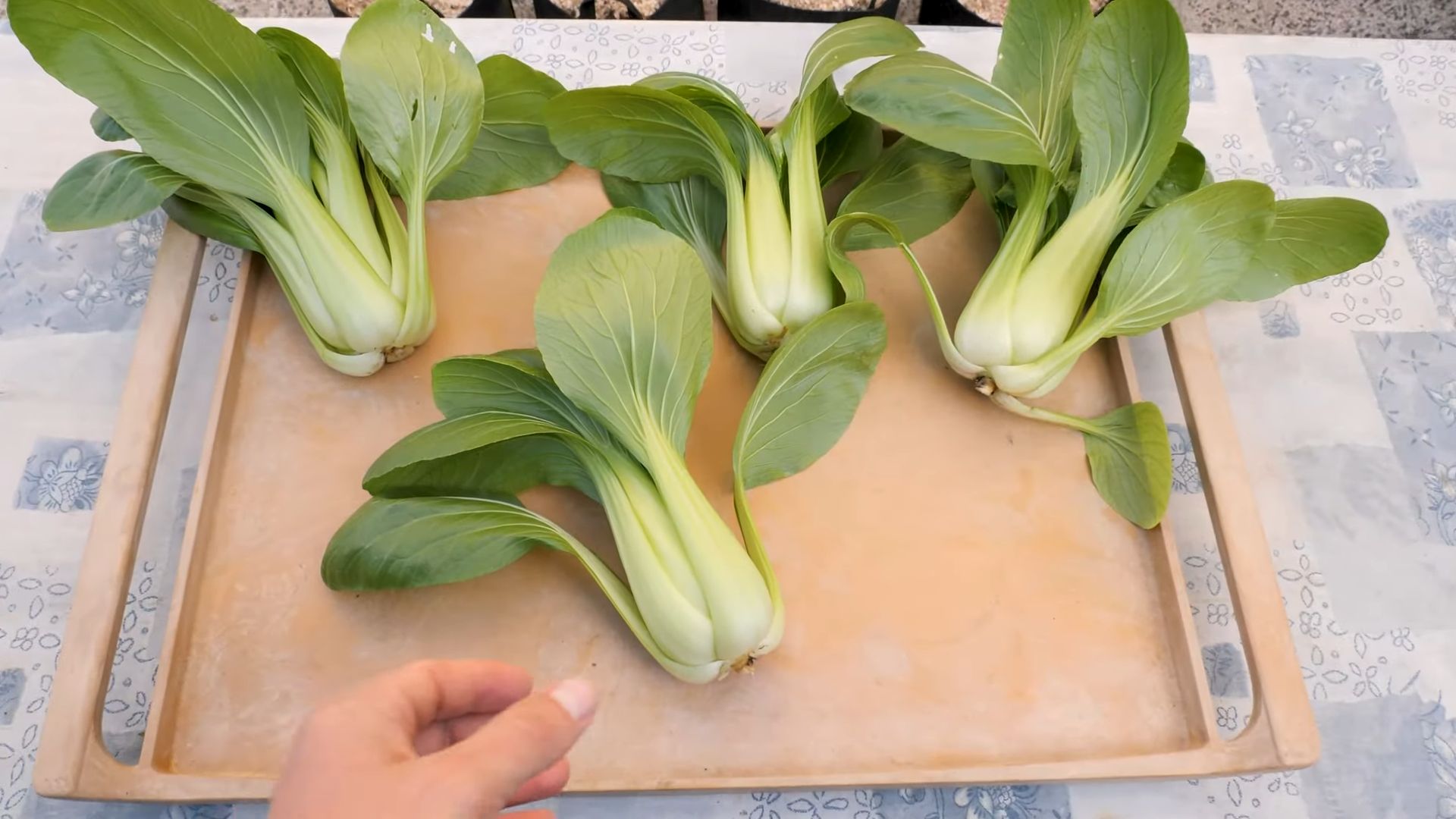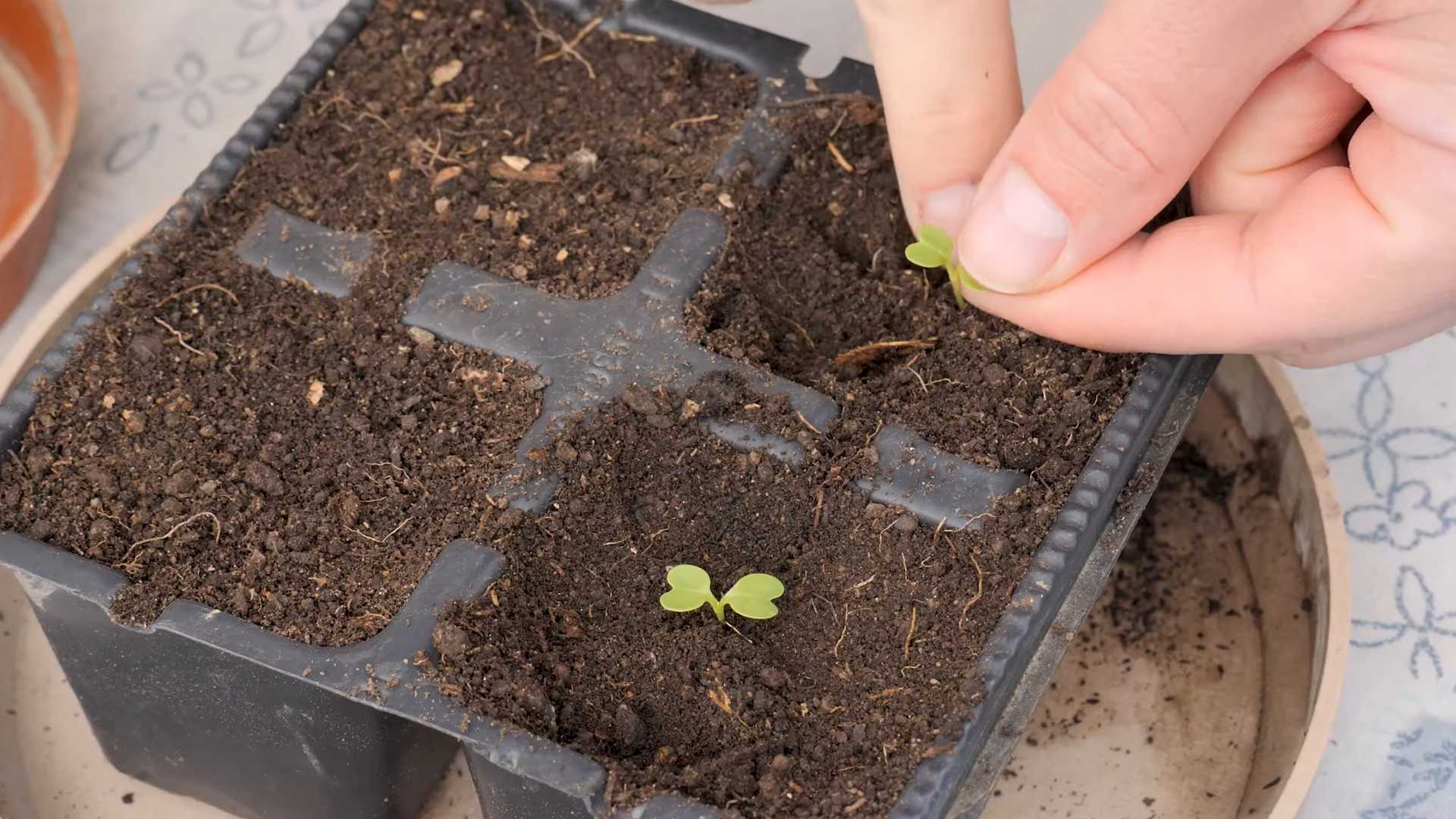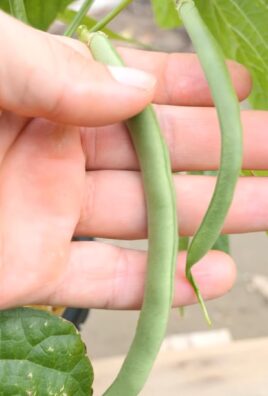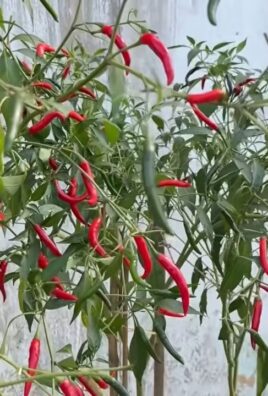Bok Choy Small Space Gardening: Dreaming of fresh, crisp bok choy but think you don’t have the space? Think again! I’m here to tell you that even the tiniest balcony, patio, or windowsill can become a thriving bok choy garden. For centuries, bok choy has been a staple in Asian cuisine, prized not only for its delicious flavor but also for its nutritional benefits. From stir-fries to soups, this versatile vegetable adds a delightful crunch and a boost of vitamins to any meal.
But let’s face it, heading to the grocery store every time you crave bok choy can be a hassle. Plus, store-bought produce often lacks the freshness and flavor of homegrown vegetables. That’s where bok choy small space gardening comes in! I’m going to share some simple, yet effective DIY tricks and hacks that will allow you to cultivate your own bountiful harvest, no matter how limited your space may be.
Imagine stepping outside your door and picking fresh, vibrant bok choy leaves for your dinner. No more wilted greens or long trips to the store! This article will empower you to create your own mini-farm, providing you with a sustainable source of fresh produce and a rewarding gardening experience. So, grab your gardening gloves, and let’s get started!

Bok Choy Bonanza: Growing Your Own in a Tiny Space!
Hey there, fellow green thumbs! So, you’re itching to grow your own veggies but think you don’t have the space? Think again! Bok choy, that delicious and nutritious leafy green, is surprisingly perfect for small-space gardening. I’m going to walk you through everything you need to know to cultivate your own little bok choy patch, even if all you have is a balcony or a sunny windowsill. Let’s get started!
What You’ll Need: The Bok Choy Starter Kit
Before we dive into the planting process, let’s gather our supplies. This is what I’ve found works best:
* Bok Choy Seeds: Obviously! You can find these at most garden centers or online. Look for varieties specifically labeled as “dwarf” or “baby” bok choy if you’re *really* tight on space.
* Containers: Choose containers that are at least 6 inches deep and wide. I personally love using recycled plastic tubs or even old buckets. Just make sure they have drainage holes!
* Potting Mix: Don’t skimp on this! Use a good quality potting mix that drains well. Avoid using garden soil, as it can compact and hinder growth.
* Watering Can or Hose: For keeping your bok choy happy and hydrated.
* Fertilizer (Optional): A balanced liquid fertilizer can give your bok choy a boost, but it’s not strictly necessary.
* Trowel or Small Shovel: For planting and transplanting.
* Spray Bottle (Optional): For misting seedlings.
* Sunlight: Bok choy needs at least 4-6 hours of sunlight per day.
Getting Started: Planting Your Bok Choy Seeds
Okay, now for the fun part! Let’s get those seeds in the soil.
1. Prepare Your Containers: Fill your containers with potting mix, leaving about an inch of space at the top. Gently pat down the soil to remove any air pockets.
2. Sow the Seeds: Sprinkle the bok choy seeds evenly over the surface of the soil. You don’t need to bury them too deep – about ¼ inch is perfect.
3. Cover and Water: Lightly cover the seeds with more potting mix. Then, gently water the soil using a watering can or spray bottle. You want the soil to be moist but not soggy.
4. Find a Sunny Spot: Place your containers in a location that receives at least 4-6 hours of sunlight per day. A south-facing balcony or windowsill is ideal.
5. Keep it Moist: Keep the soil consistently moist, but not waterlogged. Check the soil moisture daily and water as needed.
From Seedling to Sprout: Nurturing Your Bok Choy
Now comes the waiting game! But don’t worry, bok choy is relatively quick to germinate.
1. Germination: You should start to see seedlings emerge within 5-10 days.
2. Thinning (If Necessary): If you sowed your seeds densely, you’ll need to thin them out once they have a few true leaves. This means removing some of the seedlings to give the remaining ones more space to grow. Aim for about 2-3 inches between plants. I know it feels cruel to pull them out, but it’s necessary for healthy growth!
3. Watering: Continue to water your bok choy regularly, keeping the soil consistently moist.
4. Fertilizing (Optional): If you choose to fertilize, do so every 2-3 weeks with a balanced liquid fertilizer. Follow the instructions on the fertilizer packaging.
5. Pest Control: Keep an eye out for pests like aphids or cabbage worms. If you spot any, you can try spraying them with a mixture of water and dish soap or using an organic insecticide. I prefer to pick them off by hand whenever possible.
Troubleshooting: Common Bok Choy Problems
Even with the best care, you might encounter a few challenges along the way. Here are some common problems and how to address them:
* Yellowing Leaves: This could be a sign of overwatering, underwatering, or nutrient deficiency. Check the soil moisture and adjust your watering accordingly. If you suspect a nutrient deficiency, try fertilizing with a balanced liquid fertilizer.
* Bolting (Premature Flowering): Bok choy can bolt (go to seed) if it’s exposed to high temperatures or stress. To prevent bolting, try to keep your plants cool and well-watered. You can also choose bolt-resistant varieties.
* Pest Infestations: As mentioned earlier, aphids and cabbage worms are common pests of bok choy. Regularly inspect your plants and take action as soon as you spot any pests.
Harvest Time: Enjoying Your Homegrown Bok Choy
The best part! Depending on the variety, your bok choy should be ready to harvest in about 30-50 days.
1. Harvesting: You can harvest the entire plant at once or harvest individual leaves as needed. To harvest the entire plant, simply cut it off at the base. To harvest individual leaves, start with the outer leaves and work your way inwards.
2. Enjoying Your Harvest: Bok choy is incredibly versatile. You can stir-fry it, add it to soups, salads, or even grill it. I love to quickly sauté it with garlic and ginger.
Extending Your Harvest: Succession Planting
Want to keep the bok choy coming? Try succession planting! This means planting new seeds every few weeks to ensure a continuous harvest.
1. Start New Seeds: Every 2-3 weeks, sow a new batch of bok choy seeds in fresh potting mix.
2. Transplant Seedlings: Once the seedlings have a few true leaves, transplant them into your containers.
3. Enjoy a Continuous Harvest: By staggering your plantings, you can enjoy fresh bok choy throughout the growing season.
Choosing the Right Bok Choy Variety for Your Space
Not all bok choy varieties are created equal, especially when it comes to small-space gardening. Here are a few of my favorites:
* ‘Toy Choy’: This is a classic dwarf variety that’s perfect for containers. It produces small, compact heads that are ready to harvest in about 30 days.
* ‘Baby Bok Choy’: As the name suggests, this variety produces small, tender leaves that are great for salads or stir-fries.
* ‘Mei Qing Choi’: This variety is known for its mild flavor and crisp texture. It’s also relatively bolt-resistant.
Optimizing Your Small Space: Tips and Tricks
Here are a few extra tips to help you maximize your bok choy yield in a small space:
* Vertical Gardening: Consider using vertical gardening techniques, such as hanging baskets or wall planters, to create more growing space.
* Companion Planting: Plant bok choy alongside other vegetables that benefit each other. For example, planting marigolds near your bok choy can help deter pests.
* Maximize Sunlight: Position your containers in the sunniest spot possible. If you don’t have enough natural sunlight, you can supplement with grow lights.
* Regularly Check for Pests: Early detection is key to preventing pest infestations. Regularly inspect your plants and take action as soon as you spot any pests.
* Don’t Overcrowd: Give your bok choy plants enough space to grow. Overcrowding can lead to stunted growth and increased susceptibility to pests and diseases.
Understanding Bok Choy’s Growing Needs
Bok choy is a cool-season crop, meaning it thrives in temperatures between 55°F and 70°F (13°C and 21°C). It can tolerate light frost, but it’s best to protect it from extreme cold.
* Sunlight: As mentioned earlier, bok choy needs at least 4-6 hours of sunlight per day.
* Watering: Bok choy needs consistent moisture, but it doesn’t like to be waterlogged. Water deeply whenever the top inch of soil feels dry.
* Soil: Bok choy prefers well-draining soil that is rich in organic matter.
* Fertilizer: Bok choy benefits from regular fertilization, especially during its active growing period.
Dealing with Pests and Diseases Organically
I’m a big believer in organic gardening practices. Here are a few ways to deal with pests and diseases without using harsh chemicals:
* Neem Oil: Neem oil is a natural insecticide and fungicide that can be used to control a wide range of pests and diseases.
* Insecticidal Soap: Insecticidal soap is another effective way to control soft-bodied pests like aphids and whiteflies.
* Diatomaceous Earth: Di

Conclusion
So, there you have it! Growing your own bok choy in a small space isn’t just a possibility; it’s a rewarding and surprisingly simple endeavor. We’ve walked you through the steps, from selecting the right container and soil to nurturing your leafy greens to a bountiful harvest. But why should you take the plunge and try this DIY trick?
Firstly, the taste. Store-bought bok choy simply can’t compare to the crisp, fresh flavor of homegrown. Imagine adding vibrant, tender leaves to your stir-fries, soups, or salads, knowing you cultivated them yourself. The difference is truly remarkable.
Secondly, it’s incredibly space-efficient. Whether you have a tiny balcony, a sunny windowsill, or a small patio, you can absolutely grow bok choy. This makes it perfect for apartment dwellers, urban gardeners, or anyone with limited outdoor space. You don’t need acres of land to enjoy fresh, healthy produce.
Thirdly, it’s a sustainable and cost-effective way to add greens to your diet. You’ll reduce your reliance on grocery stores, minimize your carbon footprint, and save money in the long run. Plus, you’ll have the satisfaction of knowing exactly where your food comes from and how it was grown.
But the benefits don’t stop there. Gardening is a fantastic stress reliever. Tending to your bok choy plants can be a calming and meditative experience, providing a welcome escape from the hustle and bustle of daily life. It’s a chance to connect with nature, nurture something beautiful, and reap the rewards of your labor.
Ready to experiment? Consider trying different varieties of bok choy. Baby bok choy is perfect for quick stir-fries, while Shanghai bok choy offers a slightly sweeter flavor. You can also experiment with companion planting. Try growing your bok choy alongside herbs like cilantro or dill, which can help deter pests and enhance the flavor of your greens. Another variation is to try succession planting. Plant a new batch of seeds every few weeks to ensure a continuous harvest throughout the growing season.
Don’t be afraid to get creative with your container gardening setup. Use recycled materials like old buckets or plastic containers to create unique and eco-friendly planters. You can even build a vertical garden to maximize your space and add a touch of visual appeal to your balcony or patio.
This DIY trick for growing bok choy in small spaces is a game-changer for anyone who wants to enjoy fresh, healthy greens without the need for a large garden. It’s easy, affordable, and incredibly rewarding.
So, what are you waiting for? Grab some seeds, find a sunny spot, and get ready to embark on your bok choy growing adventure. We’re confident that you’ll be amazed by the results. And most importantly, we want to hear about your experience! Share your photos, tips, and stories with us in the comments below. Let’s create a community of small-space bok choy growers and inspire others to embrace the joys of homegrown goodness. Happy gardening!
Frequently Asked Questions (FAQ)
What kind of soil is best for growing bok choy in containers?
The ideal soil for container-grown bok choy is a well-draining potting mix that is rich in organic matter. Avoid using garden soil, as it can become compacted in containers and hinder drainage. Look for a potting mix that contains ingredients like peat moss, perlite, and vermiculite. You can also amend your potting mix with compost or aged manure to provide additional nutrients. A slightly acidic to neutral pH (around 6.0 to 7.0) is optimal for bok choy growth.
How much sunlight does bok choy need?
Bok choy thrives in full sun, which means it needs at least 6 hours of direct sunlight per day. However, it can also tolerate partial shade, especially in hotter climates. If you live in a region with intense summer heat, providing some afternoon shade can help prevent the leaves from wilting or burning. If you’re growing bok choy indoors, place it near a sunny window or use grow lights to supplement natural light.
How often should I water my bok choy plants?
Water your bok choy plants regularly, keeping the soil consistently moist but not waterlogged. The frequency of watering will depend on factors like the weather, the size of your container, and the type of potting mix you’re using. Check the soil moisture level daily by sticking your finger about an inch into the soil. If it feels dry, it’s time to water. Water deeply, allowing the water to drain out of the bottom of the container. Avoid overhead watering, as this can increase the risk of fungal diseases.
What are some common pests and diseases that affect bok choy?
Bok choy can be susceptible to pests like aphids, flea beetles, and cabbage worms. To prevent pest infestations, inspect your plants regularly and remove any pests you find by hand. You can also use insecticidal soap or neem oil to control pests. Common diseases that affect bok choy include downy mildew and clubroot. To prevent these diseases, ensure good air circulation around your plants, avoid overhead watering, and practice crop rotation. If you notice signs of disease, remove the affected leaves immediately and treat the plants with a fungicide if necessary.
How do I harvest bok choy?
You can harvest bok choy at any stage of growth, depending on your preference. For baby bok choy, harvest when the leaves are about 4-6 inches long. For mature bok choy, harvest when the heads are about 8-12 inches tall. To harvest, simply cut the entire head of bok choy at the base of the plant with a sharp knife. You can also harvest individual leaves as needed, starting with the outer leaves. This will allow the plant to continue producing new leaves.
Can I grow bok choy indoors during the winter?
Yes, you can grow bok choy indoors during the winter, provided you have adequate light and temperature. Place your bok choy plants near a sunny window or use grow lights to provide at least 6 hours of light per day. Maintain a temperature between 55-75°F (13-24°C). Water regularly and fertilize every few weeks with a balanced fertilizer.
What kind of fertilizer should I use for bok choy?
Bok choy benefits from regular fertilization, especially when grown in containers. Use a balanced fertilizer with an NPK ratio of 10-10-10 or 20-20-20. You can also use an organic fertilizer like compost tea or fish emulsion. Fertilize every 2-3 weeks, following the instructions on the fertilizer label. Avoid over-fertilizing, as this can lead to excessive leaf growth and reduced flavor.
How long does it take for bok choy to grow?
The time it takes for bok choy to grow depends on the variety and growing conditions. Baby bok choy can be ready to harvest in as little as 30 days, while mature bok choy may take 45-60 days. Factors like temperature, sunlight, and soil fertility can also affect the growth rate.
Can I save seeds from my bok choy plants?
Yes, you can save seeds from your bok choy plants, but it requires allowing the plants to bolt (flower and produce seeds). This typically happens in the second year of growth. However, bok choy is a biennial plant, meaning it completes its life cycle in two years. If you live in an area with cold winters, you’ll need to protect your bok choy plants from frost to allow them to survive the winter and produce seeds in the spring. Once the seed pods are dry and brown, you can harvest the seeds and store them in a cool, dry place. Keep in mind that bok choy can cross-pollinate with other members of the Brassica family, so the seeds may not be true to type.
Is bok choy good for you?
Absolutely! Bok choy is a nutritional powerhouse, packed with vitamins, minerals, and antioxidants. It’s a good source of vitamins A, C, and K, as well as folate, calcium, and potassium. Bok choy is also low in calories and high in fiber, making it a healthy addition to any diet. Eating bok choy can help boost your immune system, improve bone health, and protect against chronic diseases.




Leave a Comment